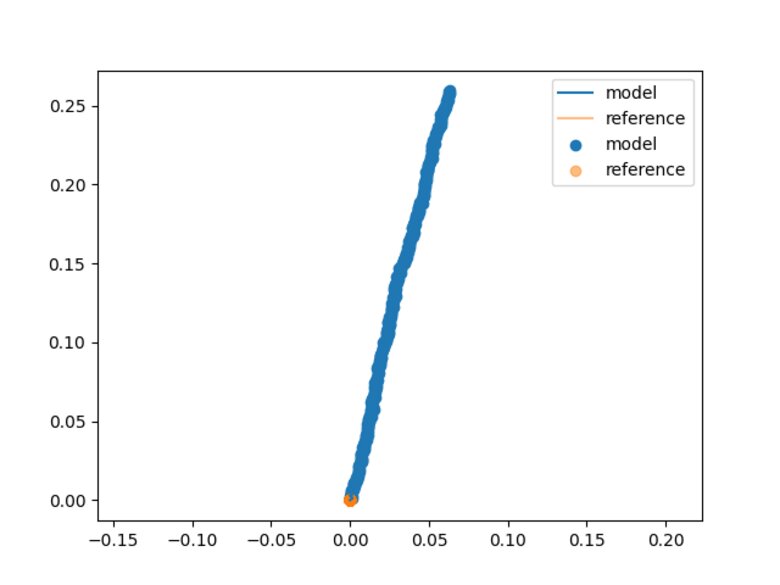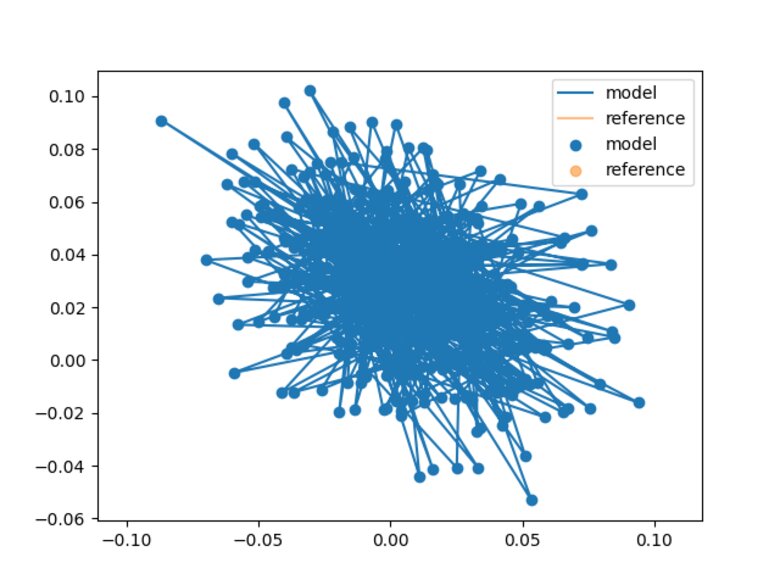FormaK aims to combine symbolic modeling for fast, efficient system modelling with code generation to create performant code that is easy to use.
This reference model is an example of the "Python Interface to define models" which serves two purposes: 1. Provide a reference for implementing a strapdown IMU as a part of other models 2. Further exercise the FormaK interface to sand down rough edges
As a third consideration, this will also provide a reference design for how other reference models will be designed and presented in the future.
Pull Request: #19 Commit: 16ba541
Along The Way¶
This design has grown in time further than I would have liked. Originally, I'd aimed for 2 weeks to 4 weeks, and it's now closer to 6.
A few things have stayed the same. The design remains intended to provide a
reference for inclusion in other designs and I was able to learn from some of
FormaK's rough edges. Unfortunately, one aspect (sympy.simplify execution
time) cropped up again and I did not reach a suitable resolution.
The few things that have stayed the same are notable because pretty much every aspect of this design has been adapted from the original.
Sympy, Quaternions¶
The math outlined in the original design was largely replaced by using the Sympy Quaternion model. This was absolutely the correct decision and I should have done some more research before starting to see if Sympy had this type of rotation representation already. At latest, this should have been found in the experimental phase of the project. In the end, ~3 weeks could have been cut out of the timeline if I'd recognized this at the experimental phase.
Feature Testing¶
The feature test was also replaced wholesale. This was partly for convenience (I already have NASA data) but also because the NASA data comes with clearly defined motion information. The start of the data is pre-ignition and then there are also known times for ignition and liftoff. This pre-ignition data serves as a more test-able feature test because I can know the orientation of the IMU (provided by the NASA documentation) and perform a pseudo-static test to assert that the motion of the sensor data doesn't move. This pseudo-static test made it easy to understand when the model wasn't oriented correctly or incorrectly accommodating gravity. For example, something is off when there's a 2g (19.62 m/s2) effect in what should be a static test.
The change in feature test also provided the motion for two extensions to the model beyond the basics: calibration for IMU orientation and calibration for IMU acceleration biases.
First, the IMU was rotated in all axis away from the nominal navigation frame, motivating the use of calibration to "remove" this in favor of reporting in neat and tidy vehicle aligned axis.
Second, the IMU exhibited acceleration bias that quickly caused non-zero motion even over relatively short time scales (~1 second). Some of the bias could be corrected, but some was also a random walk that would need to be modeled within the noise in a full filter implementation and corrected for via fusion with the onboard LIDAR system.


Unit Testing¶
The design also missed some straightforward opportunities for unit testing. Specifically, the final implementation has unit tests for static motion and circular motion that have straightforward closed-form references to compare to the IMU model.
What's next?¶
Simplify Hyper Mini¶
I've run into slowdowns with Sympy's simplify function in multiple areas of
the projects. I'm going to take a small detour from general feature work to
spend some more time looking into the root cause of poor performance when
simplifying expressions.
Model fitting¶
I spent a lot of time in the innovation filtering design document describing the model selection process. Now that I've moved past the refactor and onto the next thing, I'm looking forward to implementing the automatic model selection process.